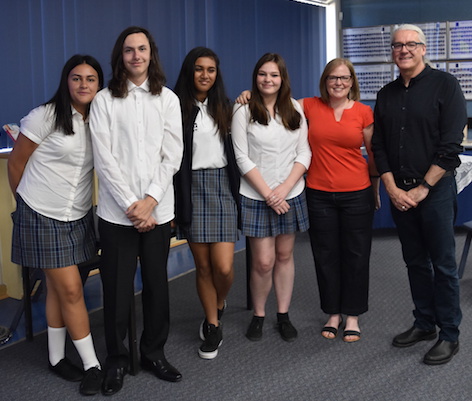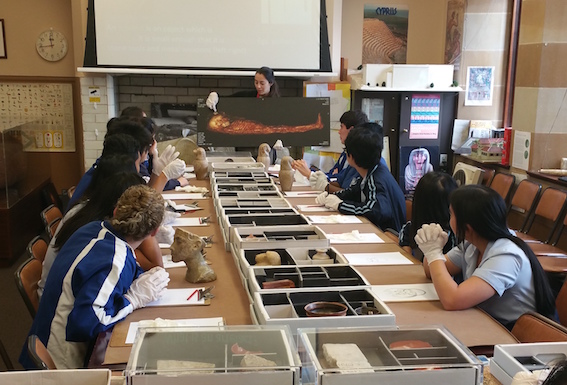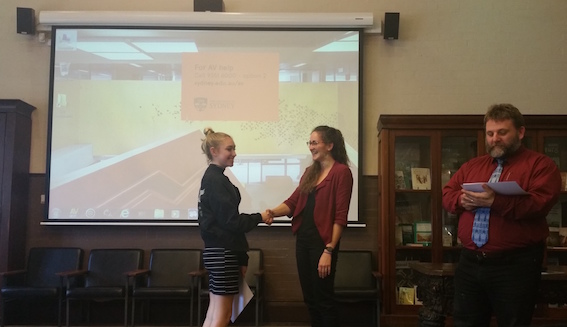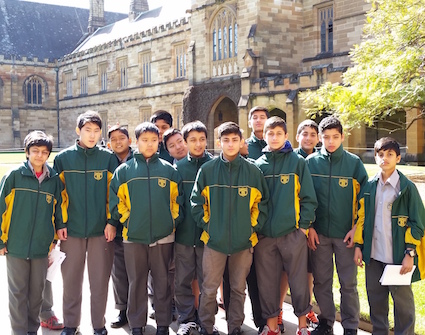The History and Classics Ancient History Social Inclusion Program works to address the underrepresentation of students from low socio-economic and diverse backgrounds at the University of Sydney and in History courses especially. The Program not only initiates and strengthens connections between partner schools and the University, the Program is structured in such a way as to be of service to our partner schools, responding to the needs of both students and their teachers. By familiarising high school students from Mount Druitt, Parramatta, Granville, Campbelltown, Auburn, Liverpool, Coonabarabran, and Broken Hill with the University, the Program aims to foster the aspirations of students from these communities to pursue and excel in tertiary studies. Here is a summary of what we’ve been up to:
First in the Family (FiF)
Created in late 2015 after the schools outreach program prompted new efforts to support students at the University who shared backgrounds with the communities in which we were engaging, we are now spear-heading a Faculty wide effort to create a First-in-Family network among students and staff.
The network meets at least once a semester to invite student membership, with a view of becoming a university-wise, student-run society through the University of Sydney Union. The meetings, as well as promotion online and through student publications Honi Soit and the Student Representative Council (SRC)’s Counter Course Guide, have helped increase the visibility of the network as well as the unique experiences and perspectives of first generation students. In 2017, FiF partnered with a new SRC initiative, the Comprehensive High School Network, to connect first in family students to leadership opportunities in the university community. Run by SRC Education Officers, the Comprehensive High School Network is building a mentoring program where first year students of low SES, first in family or public school backgrounds receive support and guidance from senior students of similar backgrounds. We are currently working on a combined event for FiF and E12 scholarship recipients to help foster a community of support on campus for students from marginalised backgrounds.
School visits to the university
Piloted in 2011, the visits are usually structured around a short learning module consisting of 1-2 sessions. Sessions may involve mini-lectures from university staff and visits to university museum collections. Current postgraduate, honours and/or undergraduate students provide campus tours.
Previous examples include the Medieval Sydney history project (2013) with Granville Boys, Kograh High School and Malek Fahd Islamic School, and the Migrant Sydney history project (2014) with Chifley College. We have just wrapped up this year’s Museum Project Based Learning with Year 7 students from Granville Boys High School where students created virtual museums, presenting what they had learned about curatorial practices to their peers, teachers and parents. Students who give the best presentations receive prizes from the Department of History.
Year 11 Historical Investigation Program
The Department of History has operated the Year 11 Mentoring Program since 2012.
Taking place over 5 sessions, postgraduate research students visit low SES partner schools to mentor students in creating historical projects, with the students visiting the University to learn research and library skills and to present their projects before an audience of their peers, Faculty and students. Students who give the best presentations receive prizes from the Department of History.
This year’s program is currently underway; we have once again partnered with Modern History students at Granville Boys and Ancient History students at Miller Technology High School.
Year 12 History Extension Mentoring Program
Started with 2015 HSC students at Chifley College, this program is similar to the Year 11 Program: university students guide HSC Extension students in the research and writing of their History Projects
For the 2016/17 HSC year, we are working with Chifley College as per previous years. We have also partnered with a new school to the Social Inclusion Program, Cecil Hills High School. Students submit the best essays receive prizes from the Department of History.
Essay prizes to Department of History students
Initiated in 2016, History students are nominated by staff for the best essay on the topic of social inclusion.
Regional Program
Between 2013-2015, the program engaged with the following schools: Willyama High School, Broken Hill High School, Wilcannia Central School, Dubbo Senior College, Gilgandra High School, Coonabarabran High School. The Department of History and CAHS are working on reconnecting with regional schools for late 2017/2018.
We have seen increased enrolments from at least three of our priority partner schools who rarely sent students to Arts and Social Sciences at the University of Sydney in the past. For example, two of the students with whom we worked intensively at Chifley College in Mount Druitt, which has a higher than normal Aboriginal student population, applied for and received E12 scholarships last year. This year, five students applied for the E12 program and have received offers, though not all are enrolling in an Arts degree.
But it is the community engagement aspect of the programs that has driven our efforts most, and regardless of the number of enrolments this engagement might engender, the programs have enriched the experiences of staff, students, and those in the schools while breaking down perceived barriers between an elite University and the communities that it is supposed to serve.
To find out more about the Social Inclusion Program or to get involved in one of its projects, contact Professor Michael A. McDonnell at [email protected]
What is the Social Inclusion Program?
The History and CAHS Social Inclusion Program works to address the underrepresentation of students from low socio-economic and diverse backgrounds at the University of Sydney.





